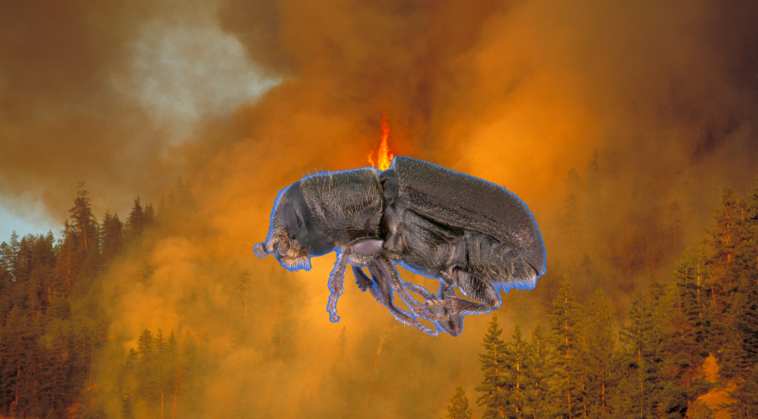No doubt you’re familiar with the pine beetle crisis that’s destroyed more than 730 million cubic meters of B.C. pine forest over the past two decades. But now things have gotten so bad that people in Alberta and even south of the border are paying close attention.
“A plague of tiny mountain pine beetles, no bigger than a grain of rice, has already destroyed 15 years of log supplies in British Columbia, enough trees to build 9 million single-family homes, and are chewing through forests in Alberta and the Pacific Northwest,” reads an article published this week in Bloomberg. “Now, an outbreak of spruce beetles is threatening to devour even more trees in North America just as similar pests are decimating supplies in parts of Europe, creating a glut of dead and dying logs.”
That is setting off alarm bells next door to B.C., particularly for the pests’ potential to help wildfires spread. “The beetles have crossed the Rockies into the western edges of Alberta, turning swaths of trees a sickly rusted red — trees that could become a tinderbox during spring wildfire season,” reads a CBC story from earlier this summer.
The Alberta government is taking the issue of pine beetle more seriously. Last fall, it promised to increase what it spends fighting the pest from $5 million to $30 million.
“It’s regional right now,” Forestry Minister Devin Dreeshen said at the time. “It’s a very serious issue. There’s $11 billion of forest that’s actually susceptible to this and it’s something that we have to be able to get in front of.”
Pretty soon it might be a problem that few people in Canada can ignore.
“If we don’t stop it here, it goes all the way to Newfoundland,” Paul Whittaker of the Alberta Forest Products Association has argued.
The Skeena Region has so far been hit less hard than other parts of B.C. “However, the infestation in the Skeena has been growing steadily over the last six years and grew from 90 hectares in 2013 to 27,249 ha in 2018,” the Interior News reported last year.
What’s causing this rapid spread? The Bloomberg piece from this week suggests that warmer winters are largely to blame. “The bugs are thriving [due to] warm winters that would normally keep them at bay, destroying a swath of the world’s timber supplies”.
According to atmospheric scientists at NASA, the warmer winter temperatures we are facing are caused by the Greenhouse Effect. The Greenhouse Effect is a result of fossil fuel pollution trapping solar heat within the Earth’s atmosphere (see below).





